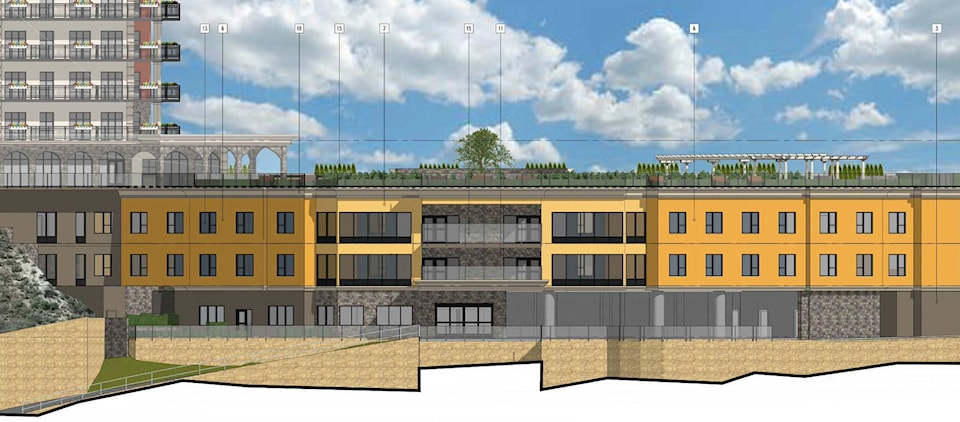The Summerland Trout Hatchery still has concerns about the impact of the proposed Banks Crescent development on the hatchery’s operations.
The proposed development is for a 424-unit seniors housing facility. The facility would be a mix of market housing, independent and assisted living, along with amenities.
The property, which overlooks Okanagan Lake, is a total of 5.7 hectares, with a usable area of 2.6 hectares.
At present, the land is being used as an orchard, although it is not within the province’s Agricultural Land Reserve.
Since the proposal was introduced, concerns have been raised about the effect this development could have on the aquifer and on the ground water.
The Freshwater Fisheries Society of B.C. has submitted a letter to council, outlining their concerns about the Aquifer Protection Strategy document, prepared by Lark Enterprises Ltd.’s consultants.
The letter says the hatchery’s concerns have not been addressed satisfactorily.
“Lark’s Aquifer Protection Strategy document appears to be primarily a work plan for the management of stormwater within the proposed development property, and not a work plan specifically designed to also protect Shaughnessy Spring water and to reduce the risk of impacted water affecting hatchery operations,” the letter states.
Kyle Girgan, manager of the hatchery, said concerns about possible turbidity events have not been addressed adequately.
While the hatchery has had brief turbidity events, a sustained event would harm the hatchery’s operations, he said.
If the water entering the hatchery is affected by turbidity, the hatchery has six to 12 minutes to deal with it before the hatchery’s operations will be affected.
Girgan said the hatchery and the Freshwater Fisheries Society of B.C. are frustrated with the process.
“The hatchery and the spring are seven minutes away from here,” he said. “Why haven’t we received any requests for an information-gathering tour?”
Coun. Janet Peake said it is important to have a discussion between the Freshwater Fisheries Society of B.C. and the developer to address the concerns.
“I think there has been a lot of awkwardness in this particular process,” she said.
Girgan is also disappointed with the process.
“We have been trying to have this discussion for a long time, but it hasn’t gone anywhere,” he said.
Mayor Peter Waterman said he would still like to have discussions with the hatchery.
“Everyone here wants to ensure that the fisheries are protected,” he said.
“We just wasted a whole bunch of time and now we’re starting over again,” Girgan said. “We are almost starting from scratch.”
For now, the hatchery remains opposed to the development proposal.
“Given the potentially high consequences associated with turbid water entering the Summerland Hatchery, and given that Golder’s Peer Review includes several recommendations for changes and additions to the Aquifer Protection Strategy document, the society must remain opposed to the proposed iCasa development and to related amendments to the Official Community Plan,” the letter states.
